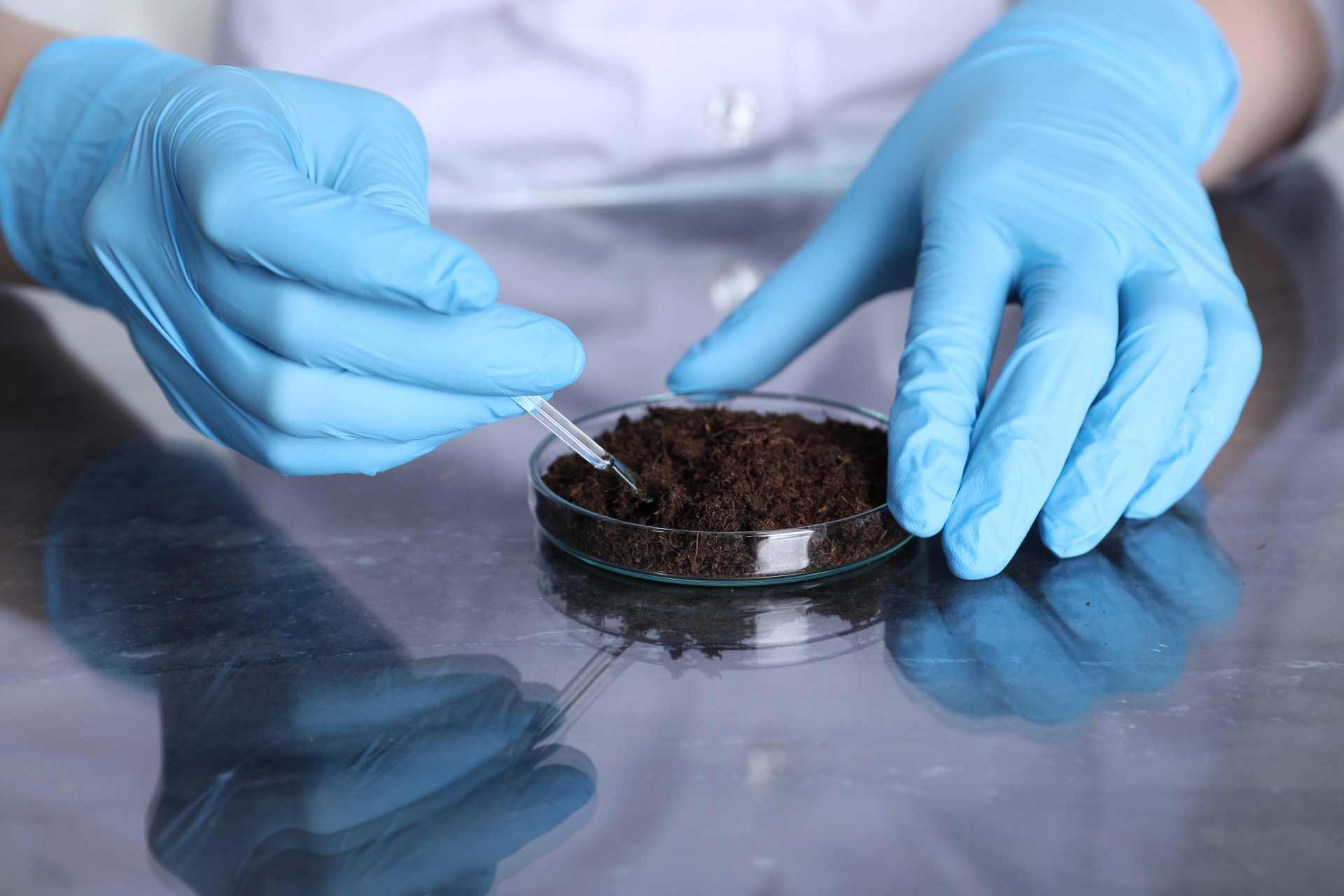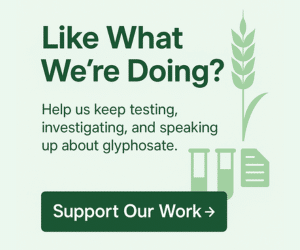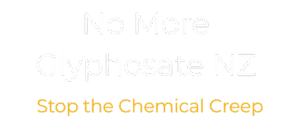We assume New Zealand is tracking the chemicals we use — but is that really happening?
This article is part of a 3-article mini-series exploring how New Zealand failed to act on the PCE’s chemical oversight recommendations.
- Part 1: The PCE’s Warning We Ignored (you are here)
- Part 2: What the Consultants Found About Monitoring Gaps
- Part 3: The Reforms That Never Landed
Following on from our recent reminder that MPI once promised to reassess glyphosate’s pre-harvest use on cereals — and then quietly shelved it — it feels like a good moment to zoom out a little. Because the more we look at these patterns, the more obvious it becomes that this isn’t just a glyphosate story. It’s a system story.
Back in 2022, the Parliamentary Commissioner for the Environment (PCE) commissioned a major body of work looking at the “environmental fate of chemicals”. In plain English, this was simply asking what actually happens to chemicals once they’re out in the real world.
Questions like:
- where do they go?
- do they move?
- do they break down — or do they persist?
- do they accumulate in soil, pasture, waterways, or food?
- and are we even measuring any of this properly?
- and what happens when multiple chemicals interact together in the same environment?
The uncomfortable truth is that many of these questions still don’t have solid answers.
The Commissioner made it clear that we don’t have the monitoring systems needed to answer those questions properly. New Zealand has over 30,000 chemicals approved for use — yet only around 200 are routinely monitored. And when monitoring does happen, it isn’t nationwide, consistent, or comprehensive — it’s patchy, and it varies by region. So we end up with thousands of chemicals in circulation, but very little clarity about where they end up.
That report came out more than two years ago. It laid out clear recommendations. We were told we needed better monitoring, stronger data, and systems that could actually track environmental fate — not just assume it.
So… did anything happen?
Did anything actually improve?
Or was this yet another warning politely acknowledged… and then quietly shelved?
What Was the Commissioner Actually Warning Us About?
The heart of the PCE report wasn’t just about chemicals themselves. It was about the information gap around them. We keep approving chemicals for use — and in some cases in vast quantities — but we don’t actually track what happens once they’re out there in the environment.
The Commissioner highlighted that if we don’t understand where chemicals go, how long they persist, or what they interact with, then we’re not really in a position to judge risk. We might assume safety because something has been used for years, but assumption isn’t evidence. And without proper monitoring, we can’t tell the difference.
It also raised another uncomfortable point: when we don’t measure things, we don’t have feedback loops. Which means the system can’t learn. If residues start rising in rivers, or accumulating in soil, or showing up in food — how would we even know? The reality is, in many cases, we simply wouldn’t.
That was the Commissioner’s core message. We cannot protect what we do not measure. And right now, New Zealand is barely measuring anything.
Why This Matters More Than Ever Now
Chemical use in New Zealand hasn’t been slowing down — if anything, it has intensified. Farming pressures, weed resistance, fast crop turnover, bigger orchards, and climate-related pest shifts have all pushed chemical dependence upward. New products arrive. Old ones get used in new ways. And yet the monitoring system hasn’t evolved to keep pace with that reality.
When most people picture “chemical risk”, they imagine accidents — a spill, a contaminated site, something dramatic. But that’s not where the modern danger lives. Today it’s the slow, invisible accumulation from everyday use. It’s the low-level exposure that builds up over years. It’s the residues in food, the spray drift that settles on pasture, and the compounds that wash into waterways after every rain.
The PCE report more or less confirmed what many already suspected: it’s not the single dose that’s the worry — it’s the steady background load that nobody is tracking well enough. And that is exactly why monitoring matters. Without real-world data, we can’t distinguish “safe” from “we just don’t know”.
So What Has Happened Since the Report Was Released?
You would think that a warning from the Parliamentary Commissioner for the Environment would have triggered action. At the very least, you’d expect a clear work plan or an implementation roadmap. After all, this came from one of the highest independent oversight bodies we have.
But since that report landed in 2022, there has been no national roll-out of a pollutant register, no major expansion of chemical monitoring, and no visible shift in how we track the fate of high-use substances — not that we are aware of, or have seen publicly.
Yes, there have been some references to internal “workstreams” and discussion papers floating around government departments. But from the perspective of ordinary New Zealanders — people who eat the food, drink the water, and live with the outcomes — nothing meaningful has been signalled.
And if the public hadn’t read the PCE’s work at all, they would have no idea this recommendation was ever made. That’s how quietly it faded.
Why This Should Concern Every New Zealander
When a government watchdog warns that we don’t know enough about where our chemicals go — and nothing is done about it — that’s not just a bureaucratic failure. That’s a public health and environmental risk being quietly normalised.
We shouldn’t need a crisis to care. We shouldn’t wait until the harm is obvious. The whole point of monitoring is to see early patterns — before the damage gets baked in.
And this is where the PCE’s message intersects directly with the everyday person.
Because this isn’t abstract. Chemicals don’t just “exist” in the regulatory ether. They move through things we actually interact with:
- the soil that grows our food
- the waterways that feed into our drinking supply
- the pasture that animals graze on
- the dust that settles inside homes
If we aren’t tracking those pathways properly, then we’re not just missing data — we’re missing reality.
And in that vacuum, “safe enough” becomes a guess rather than a guarantee.
What This Really Tells Us About Our Chemical Safety System
This points to a chemical oversight model that is still built on trust and assumption rather than real-world data. We continue to approve and use high-volume chemicals, but we don’t follow them properly once they’re out there in the environment.
We assume they break down. We assume they disperse. We assume they don’t accumulate. But those are assumptions — not measurements.
The Commissioner asked for stronger tracking because that’s the foundation of evidence-based protection. If we don’t collect data, we can’t detect change. If we don’t detect change, we can’t refine policy. And if we can’t refine policy, then we’re not really “managing risk” at all — we’re just hoping the risk is low.
This isn’t about scaremongering. It’s about responsibility. If chemical use is growing, and the monitoring system is not, then the gap isn’t theoretical — it’s widening in real time.
And that’s the heart of it.
The PCE didn’t just warn about knowledge gaps. The Commissioner warned about the consequences of not filling them.
So the question isn’t “was the report important?”
The question is:
who decided that acting on it wasn’t?
Resources & References
Sometimes it’s worth going back to the original documents — the ones that were supposed to shape how we manage risk in the first place. These are the primary sources behind this article, and every New Zealander should know they exist.
Primary PCE Report (2022)
Regulating the environmental fate of chemicals
https://pce.parliament.nz/publications/regulating-the-environmental-fate-of-chemicals/
PCE Media Release – Regulating the environmental fate of chemicals
https://pce.parliament.nz/media/pl3imdy3/media-release-regulating-the-environmental-fate-of-chemicals.pdf
Supporting Consultant Report – Jacobs NZ Ltd (2021)
Chemical contaminants in Aotearoa
https://pce.parliament.nz/media/4tzdtzeh/jacobs-chemical-contaminants-in-aotearoa.pdf
PCE FAQ Document
https://pce.parliament.nz/media/srgf5d5k/faqs-regulating-the-environmental-fate-of-chemicals.pdf
PCE Submission: Hazardous Substances & New Organisms Amendment Bill
https://pce.parliament.nz/media/rdrbu0su/submission-on-hazardous-substances-assessments-amendment-bill-pdf-240kb.pdf
PCE Letter to Ministers – Pollutant Release & Transfer Register (PRTR)
https://pce.parliament.nz/media/0r1khxum/pce-letter-to-ministers-concerning-prtr.pdf
Related Article from NoMoreGlyphosate.nz
MPI once promised a reassessment of glyphosate pre-harvest use
https://nomoreglyphosate.nz/glyphosate-reassessment-delay-nz/
We share these not to overwhelm, but because a lot of what has been “recommended” already lives in reports like these. The real question — as always — is whether those recommendations ever moved beyond paper and into action.
Image Source & Attribution
The image featured on this page is from Depositphotos and credited to the photographer NewAfrica.




